Make sure to Join my list for Weekly Tips and Recipes to Your Inbox.
19 Inspiring Embroidery and Stitching Ideas
Recently, I ordered a sweatshirt a way back with what I thought was an embroidered flower, but when it arrived, it was just printed to look like embroidery. So I planned to embroider over the printed flower, but I had no idea what embroidery and stitching method would be best.
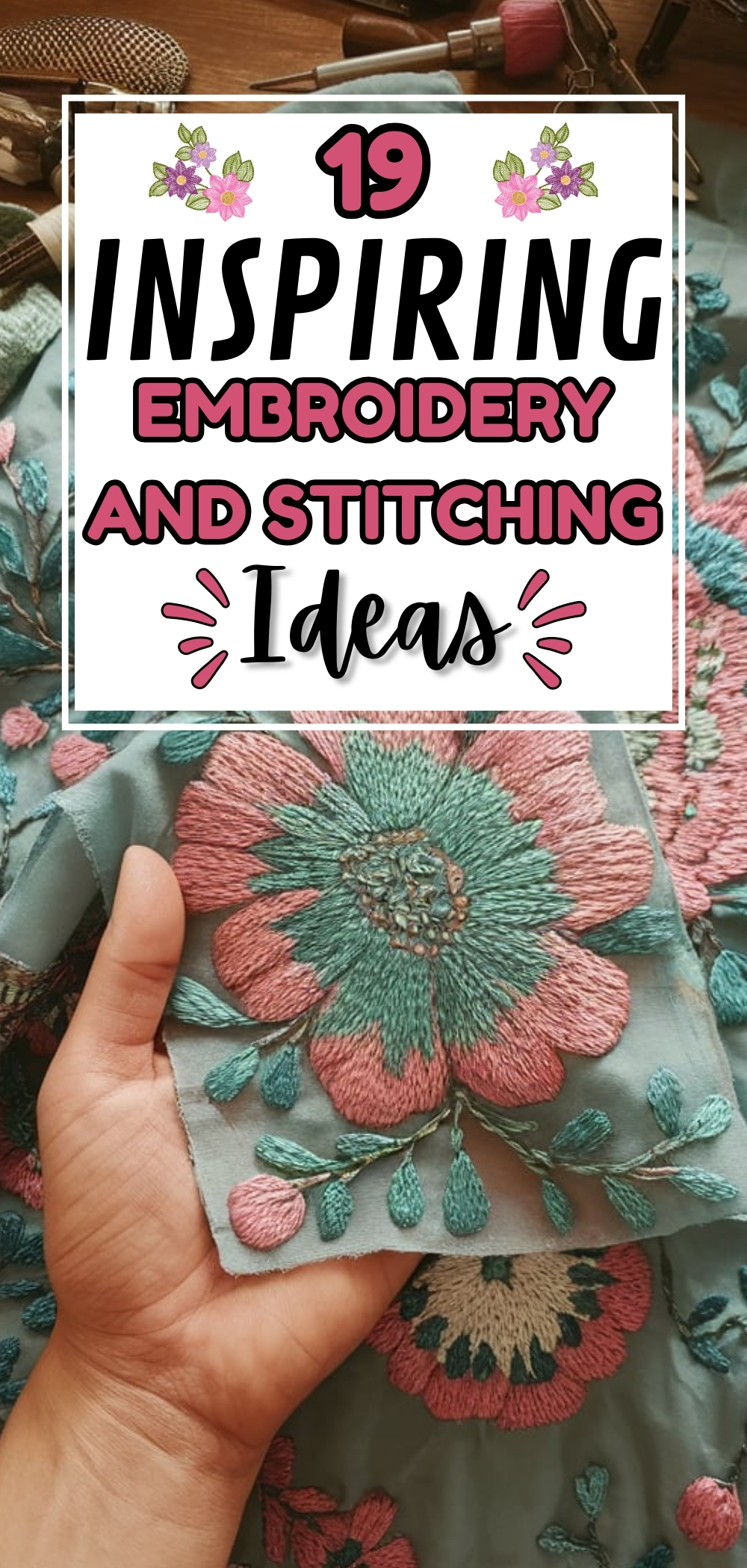
One of the most popular items to embroider is definitely flowers. And with good reason! Flowers can be embroidered using a wide variety of stitches that complement their shapes and designs. I’ll show inspirational flowers using 19 different embroidery and stitching ideas in this blog post. Some can be used for more basic or intricate renditions of flowers, while others can be utilized for larger flowers.
Embroidery is an art form that allows you to bring flowers to life with thread. Whether you’re a beginner or an expert, these 19 embroidery stitches will add depth, texture, and beauty to your floral designs. Learn expert tips and techniques to enhance your embroidery skills, and I hope some of these ideas inspire you to use them in your future projects!
1. French Knot: The Classic Centerpiece
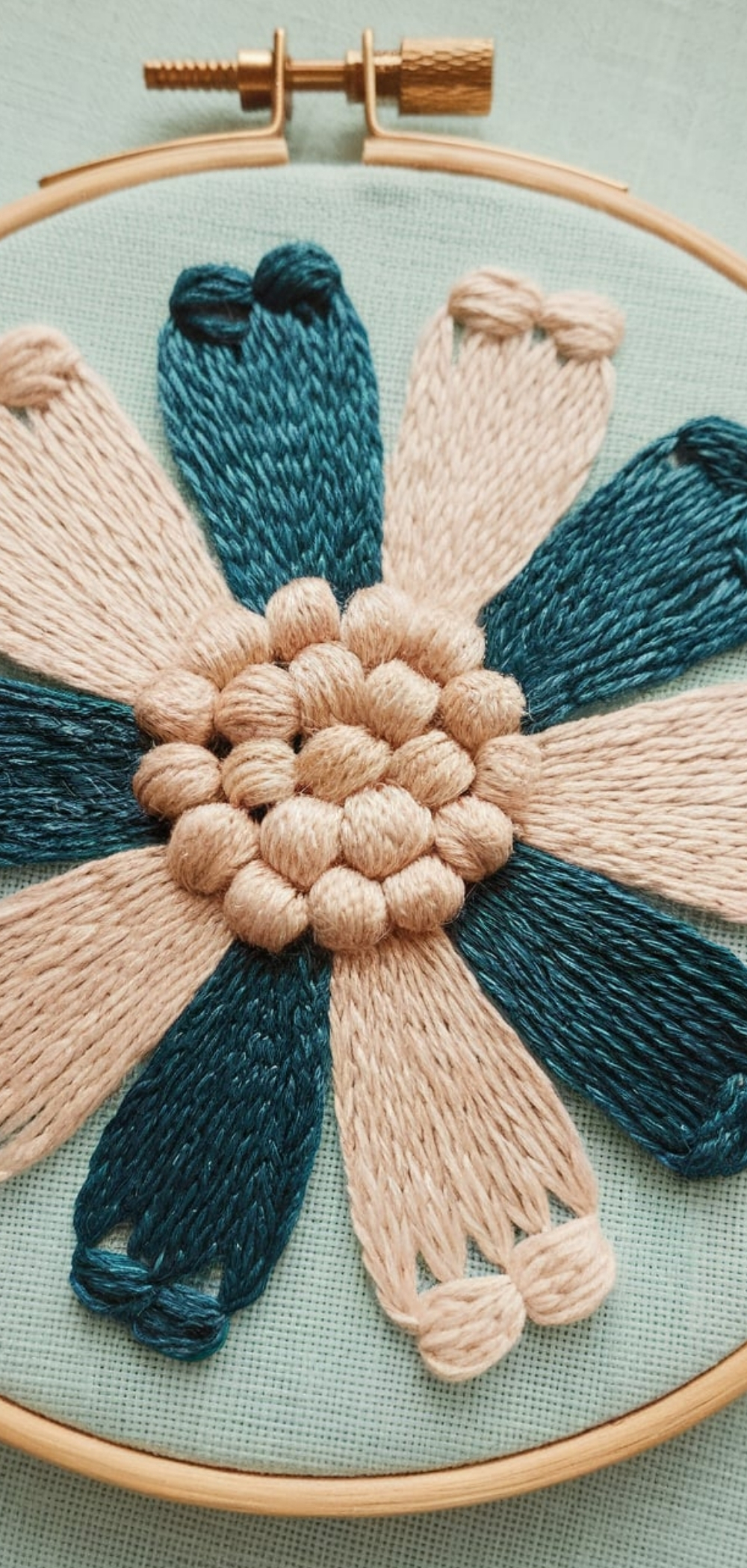
The French knot is one of the most popular stitches for flower centers. It creates a textured, raised knot that adds dimension to your floral design. This stitch is particularly useful for creating a focal point in flowers like daisies, chrysanthemums, and sunflowers.
Tips:
- Use a shorter length of thread to ensure the knot stays tight.
- Practice wrapping the thread evenly around the needle for consistent knots.
2. Satin Stitch: Smooth Petals and Bold Color
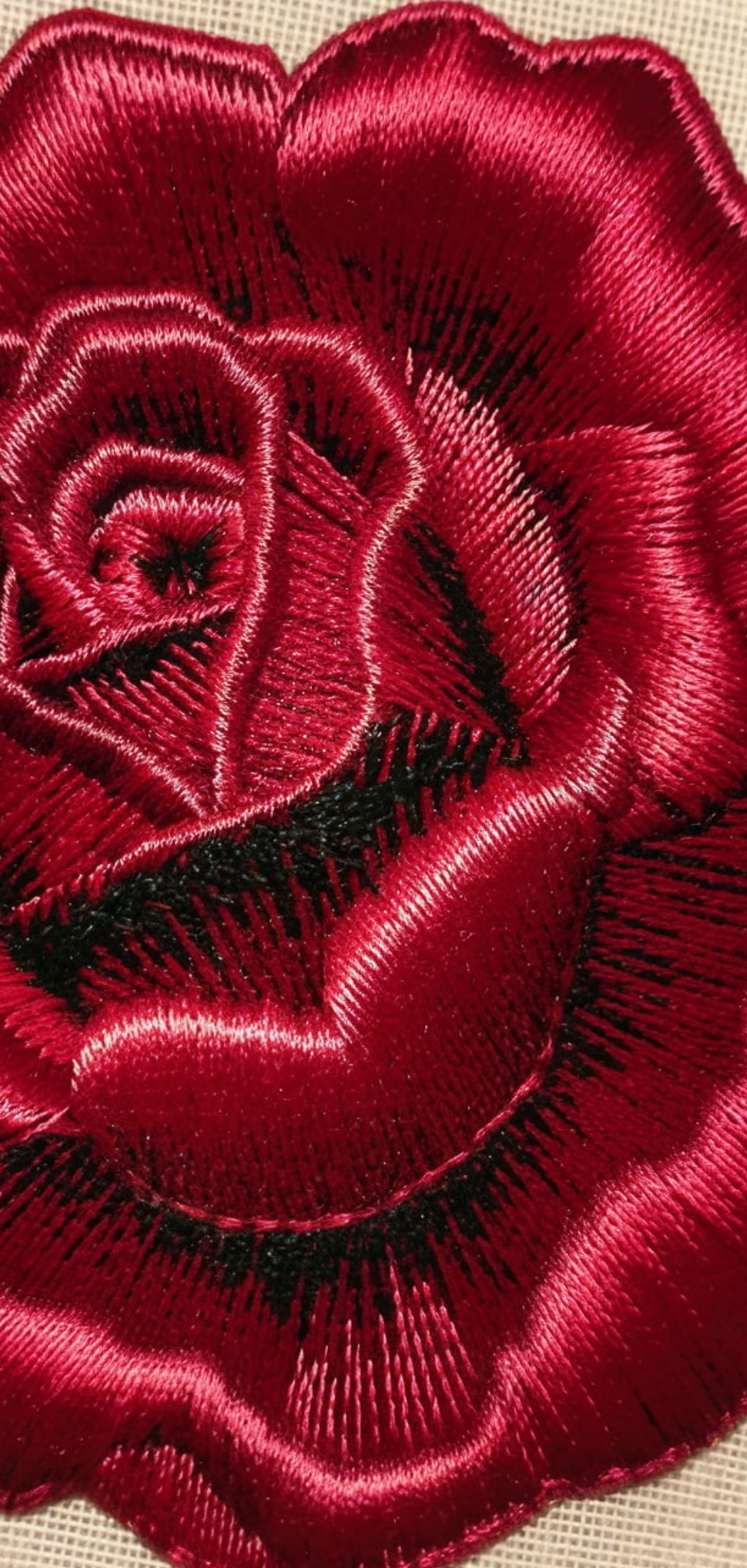
The satin stitch is known for its smooth, solid coverage, making it perfect for filling in the petals of flowers. This stitch gives a shiny finish, which is ideal for creating bold and colorful flower designs.
Tips:
- Work in short, even rows to avoid creating gaps.
- Keep the thread tension consistent for a sleek finish.
3. Lazy Daisy Stitch: Simple Yet Elegant
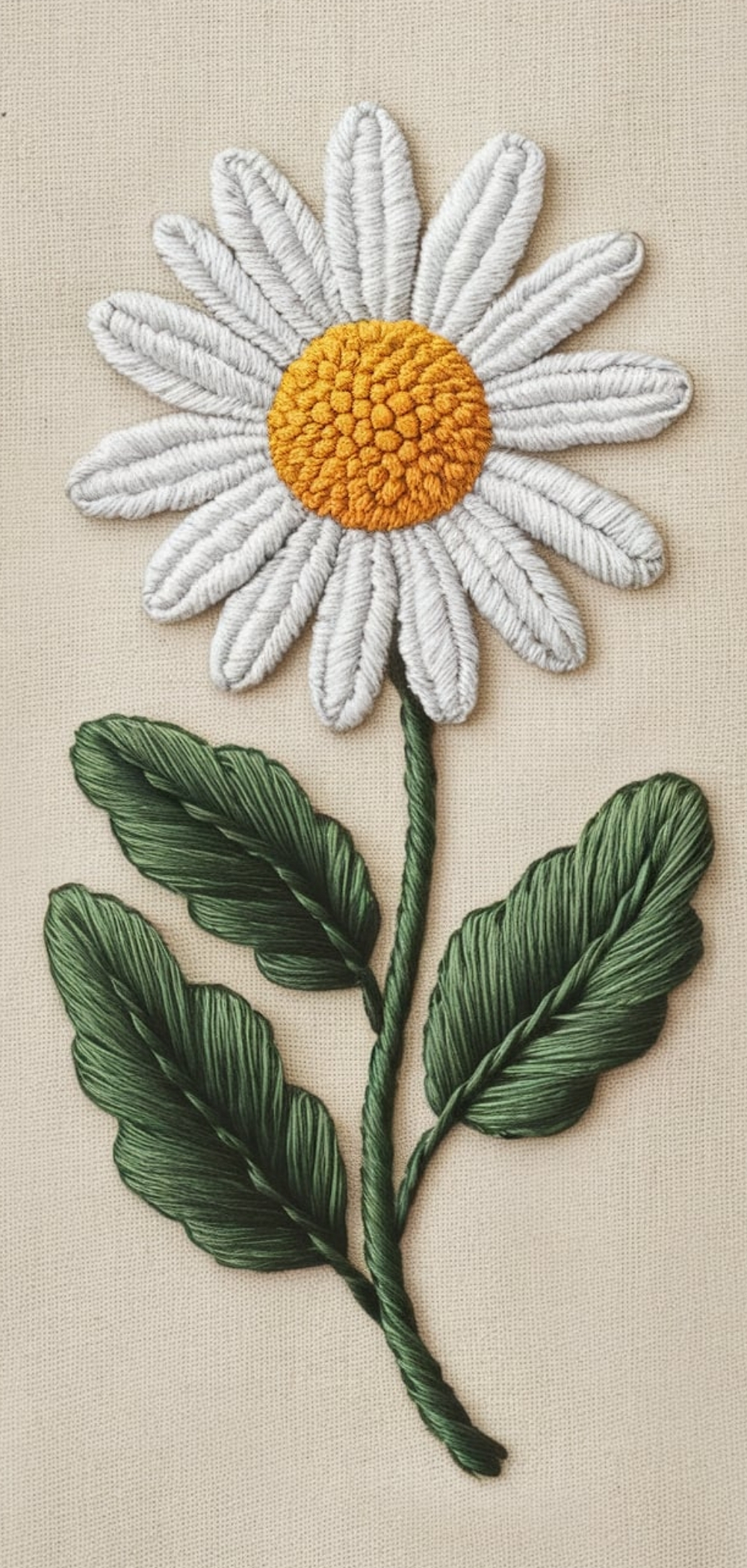
The lazy daisy stitch is a variation of the French knot and is commonly used for creating daisy-like flowers. Its simplicity makes it an excellent choice for beginners while still allowing for intricate designs.
Tips:
- Keep the loop even to ensure the petals look uniform.
- Vary the length of the loops for a more natural look.
4. Backstitch: Definition and Detail
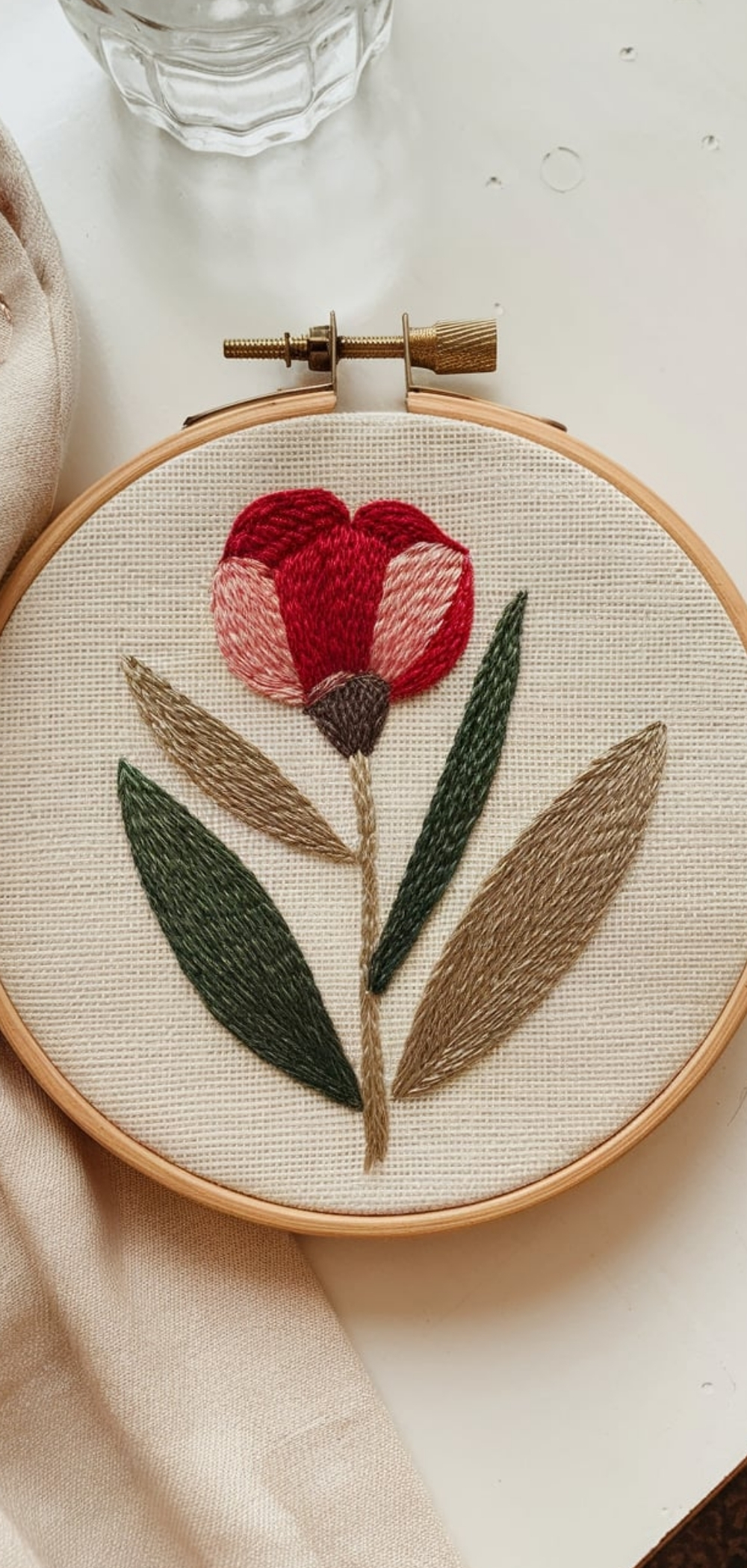
The backstitch is an essential stitch for outlining flower shapes. It adds definition and structure to the petals and leaves of flowers, creating a sharp contrast against the softer fill stitches.
Tips:
- Keep your stitch length consistent for a smooth line.
- Backstitch along the outline of the flower first before filling it in with other stitches.
5. Chain Stitch: Creating Bold Edges
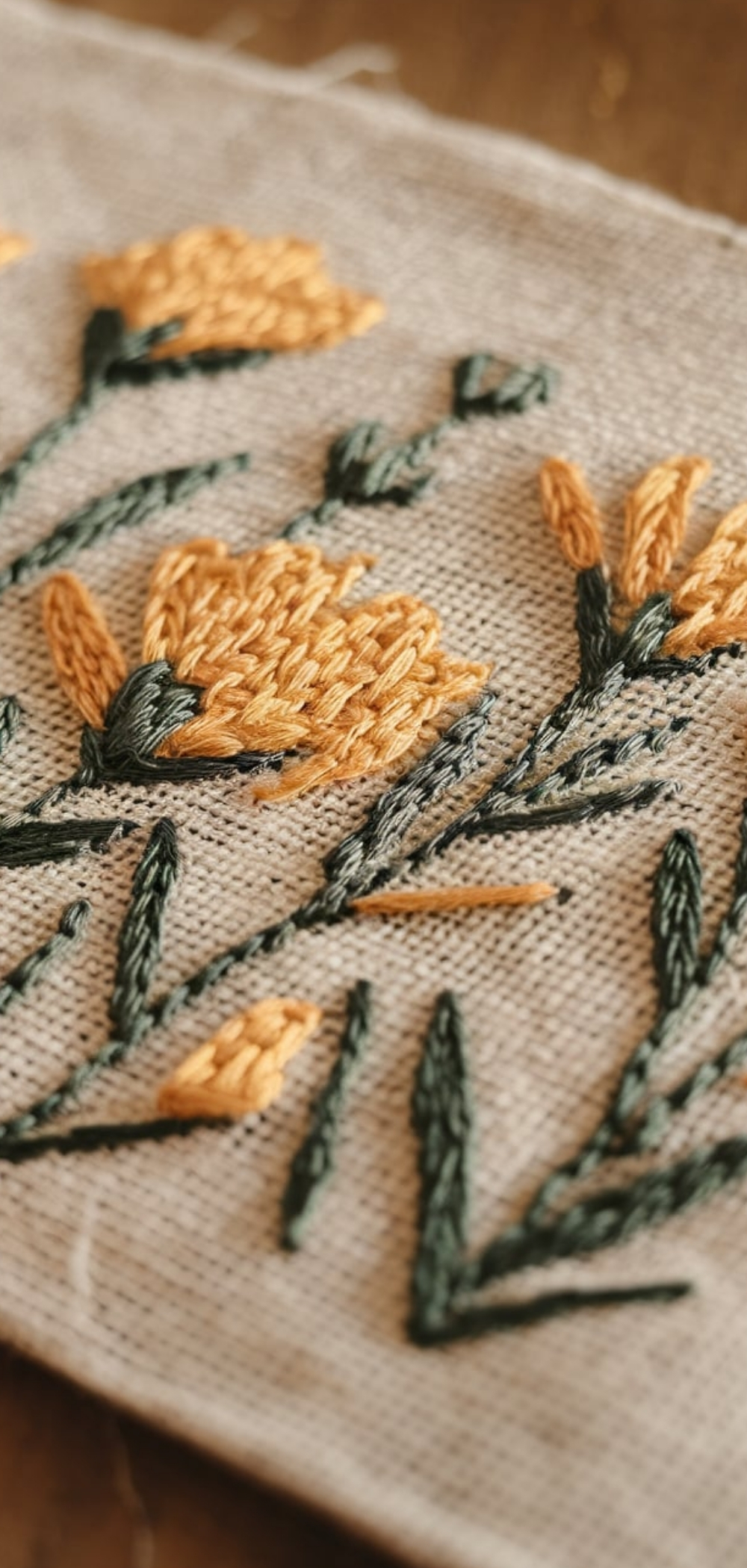
Chain stitch is an excellent way to create bold outlines or add texture to flower petals and stems. This stitch creates a chain of interlinked loops, which can be adjusted for different textures and effects.
Tips:
- Use a slightly thicker thread for more defined chains.
- Practice maintaining an even tension for smooth loops.
6. Stem Stitch: For Delicate Flower Stems
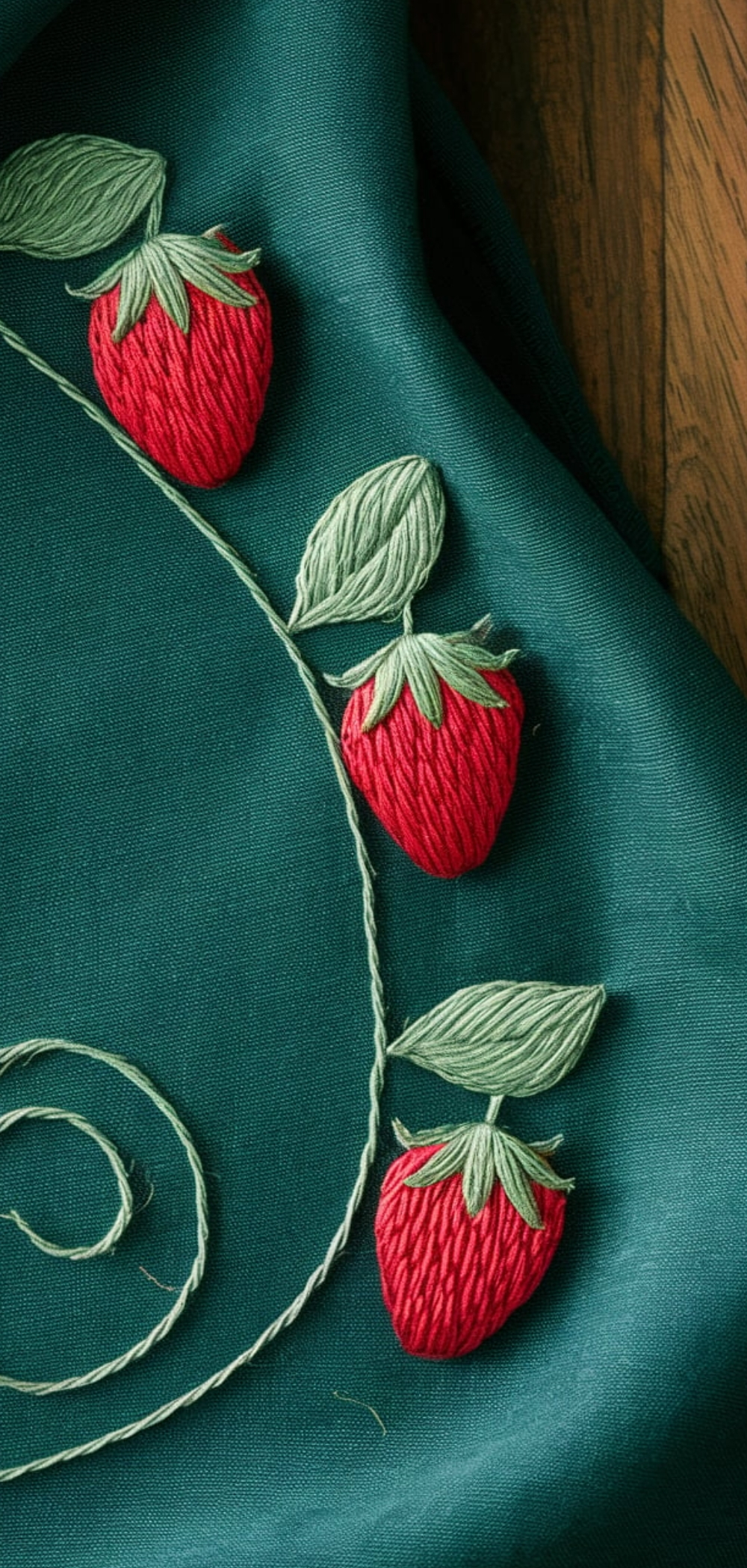
The stem stitch is perfect for creating flower stems and vines. It is a versatile stitch that gives a slightly twisted appearance, making it ideal for curved or winding stems.
Tips:
- Start with a small stitch at the beginning and gradually increase the stitch size as you move along.
- For straight stems, keep the stitch length consistent.
7. Split Stitch: Adding Textured Detail
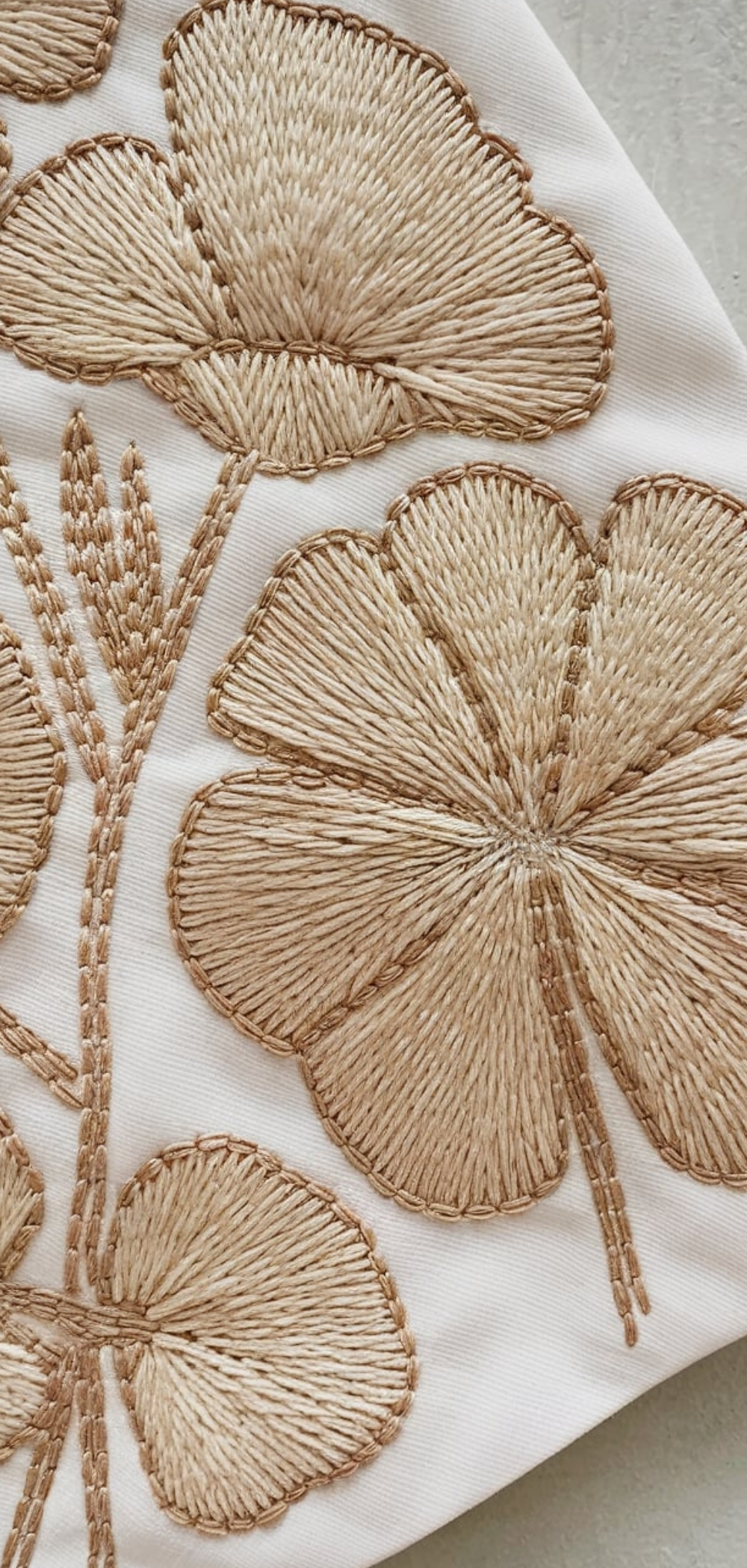
The split stitch creates a textured, slightly raised line, which can outline flowers or add fine details to flower petals. It’s perfect for adding an elegant touch to your floral design.
Tips:
- Try splitting the threads evenly for a uniform look.
- Use this stitch in combination with other fill stitches for added texture.
8. Colonial Knot: A Neater Alternative to the French Knot
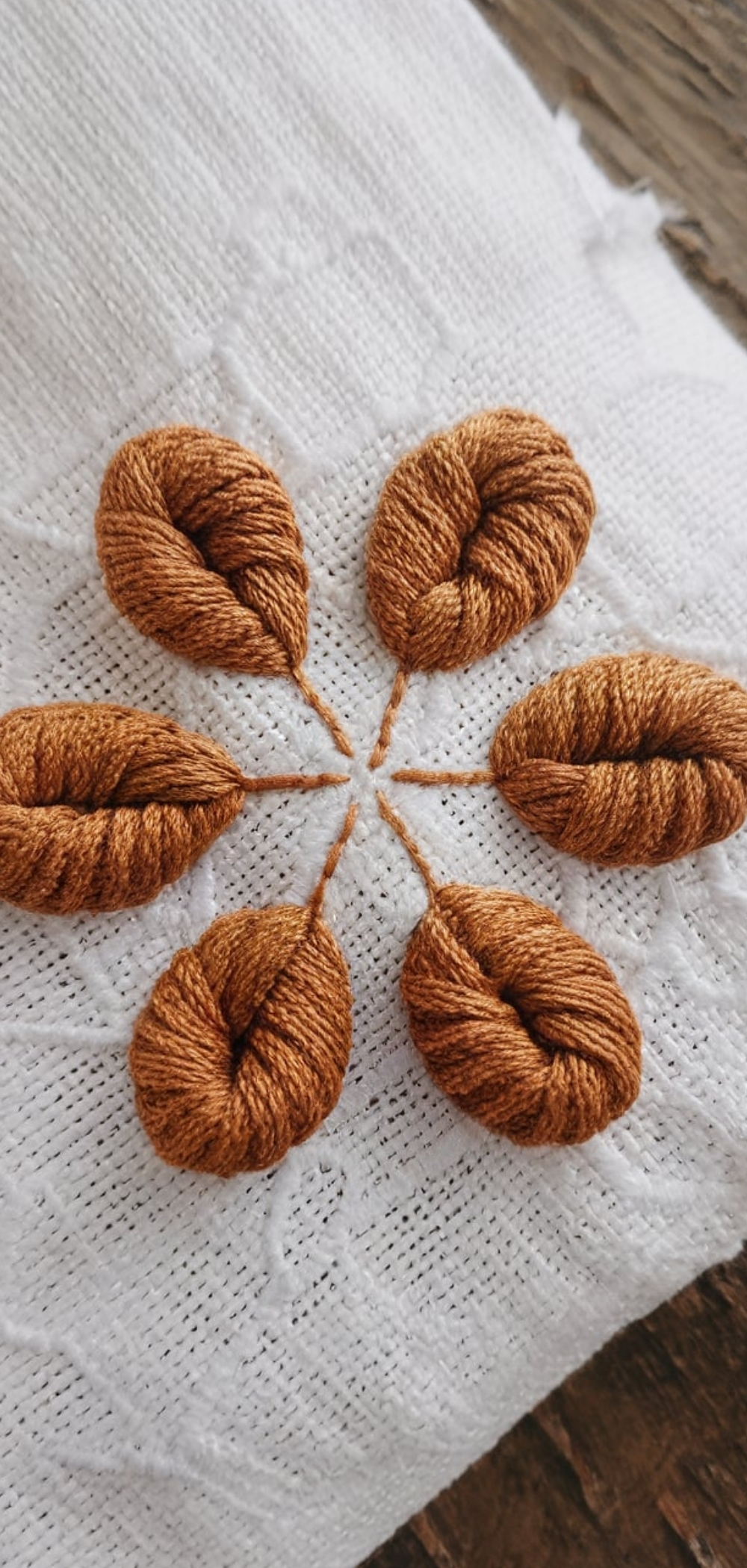
The colonial knot is a variation of the French knot. It is more controlled and consistent. This knot works well for smaller flower centers or as a filler stitch.
Tips:
- Use a smaller needle to create tight knots.
- The colonial knot should be pulled tight for a crisp, neat look.
9. Long and Short Stitch: For Realistic Petals
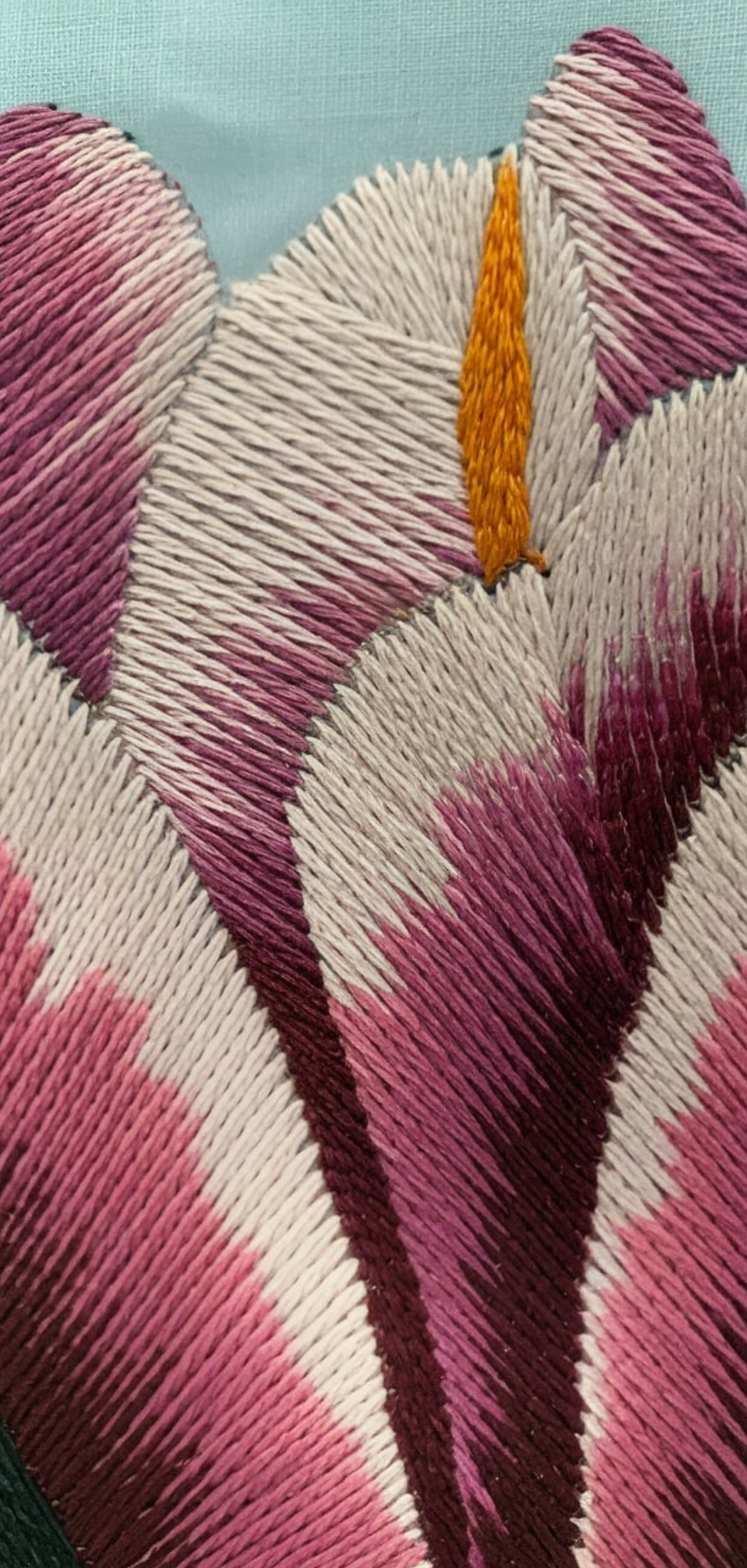
Long and short stitches are perfect for creating shaded, realistic flower petals. This technique combines longer and shorter stitches to create a smooth, blended effect that mimics the natural appearance of petals.
Tips:
- Vary the stitch length to create a more lifelike effect.
- Work in sections to avoid uneven shading.
10. Bullion Knot: For Rich, Textured Flower Centers
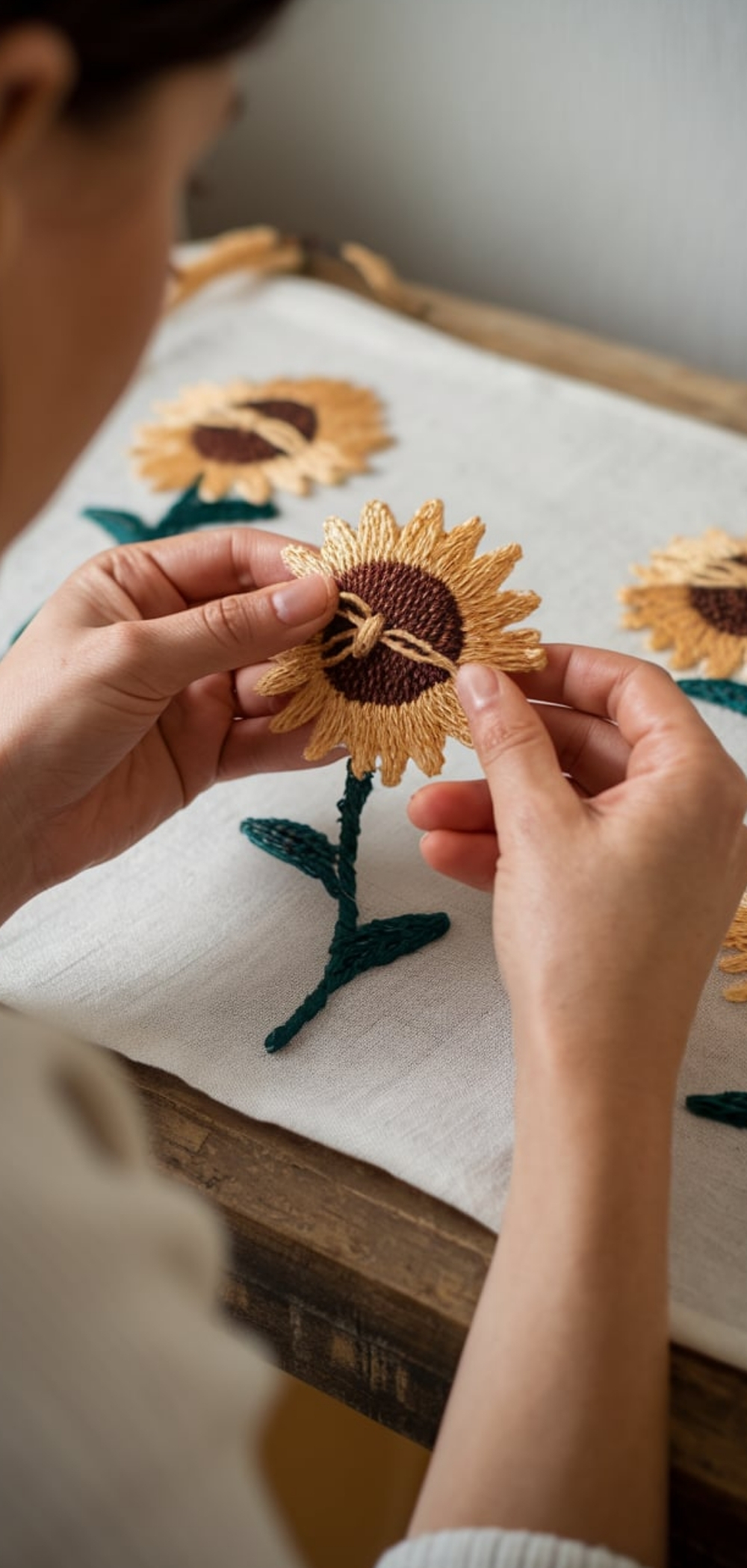
Bullion knots are often used to create highly textured flower centers. These knots are long and twisted, adding dimension and depth to the design. They are perfect for creating intricate sunflower centers or other large blooms.
Tips:
- Use a thicker thread for more pronounced knots.
- Keep the tension tight when wrapping the thread around the needle to ensure a sturdy knot.
11. Spider Web Stitch: For Unique, Lacy Flowers – Embroidery and Stitching
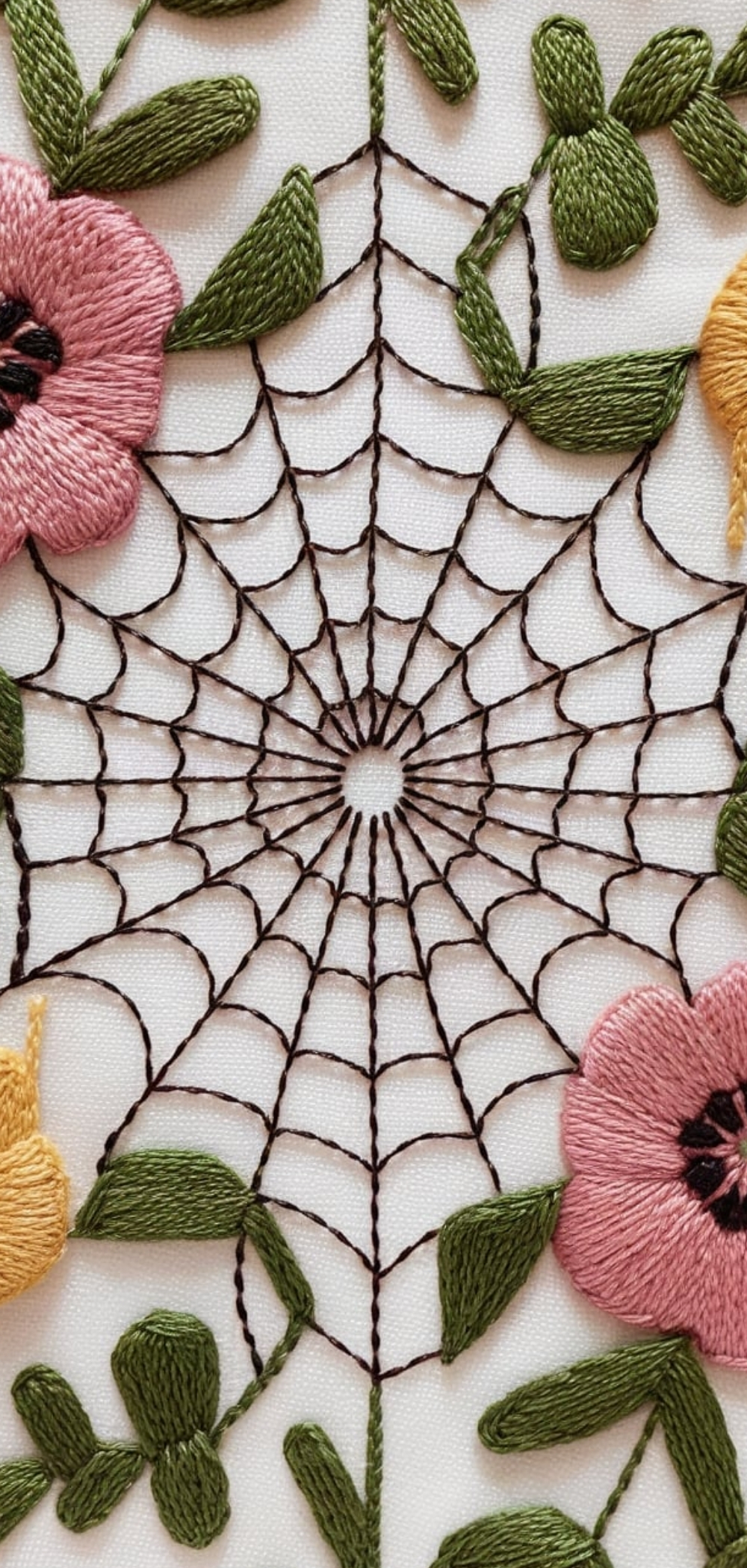
The spider web stitch creates a lace-like pattern that can be used for delicate flower petals or ornamental details. Its web effect adds a unique touch to floral embroidery.
Tips:
- Start with a basic circle to form the center of the flower.
- Gradually add loops to create the web-like effect.
12. Whipped Running Stitch: Adding Texture to Flower Petals
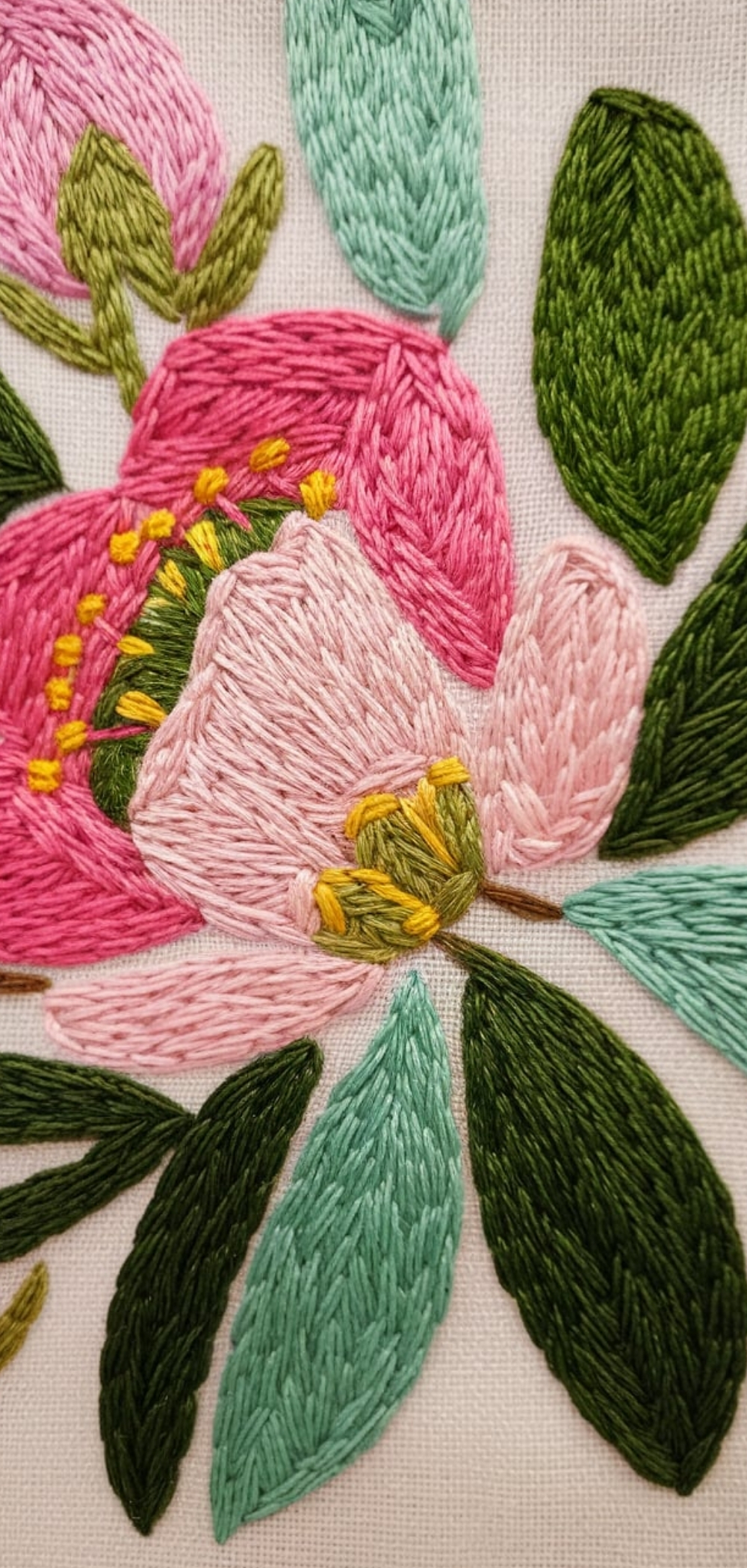
The whipped running stitch is a decorative stitch that adds texture to flower petals or leaves. It involves wrapping a thread around a basic running stitch, creating a raised effect.
Tips:
- Use contrasting thread colors to make the texture stand out.
- Keep the wrapping even for a more uniform effect.
13. Feather Stitch: For Delicate Petals and Leaves – Embroidery and Stitching
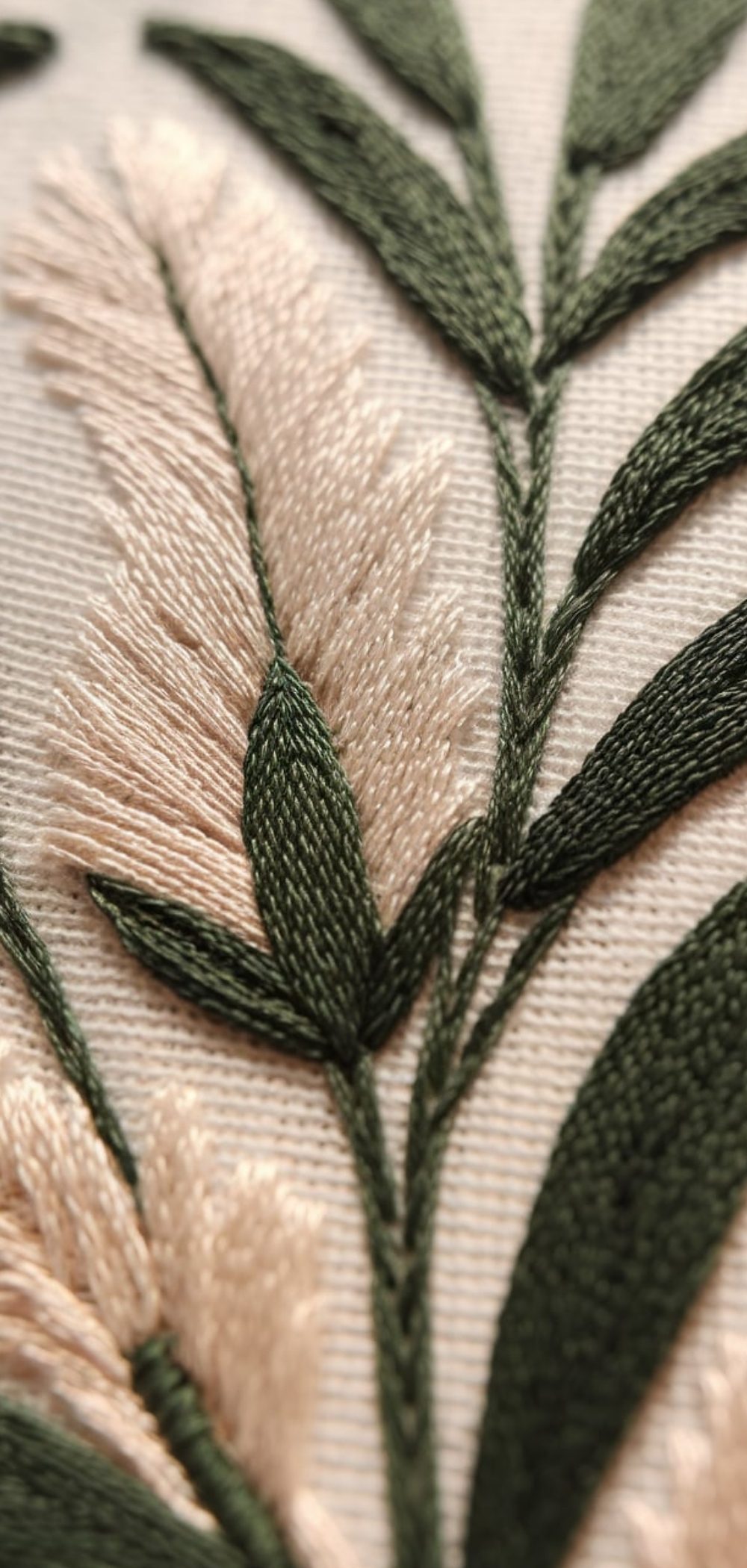
Feather stitch is great for creating delicate flower petals or leaves with a feathery texture. This stitch produces a series of V-shaped stitches that create a light, airy look.
Tips:
- Use a fine thread for a more delicate appearance.
- Experiment with stitch length for varied effects.
14. Detached Chain Stitch: Perfect for Floral Petals – Embroidery and Stitching
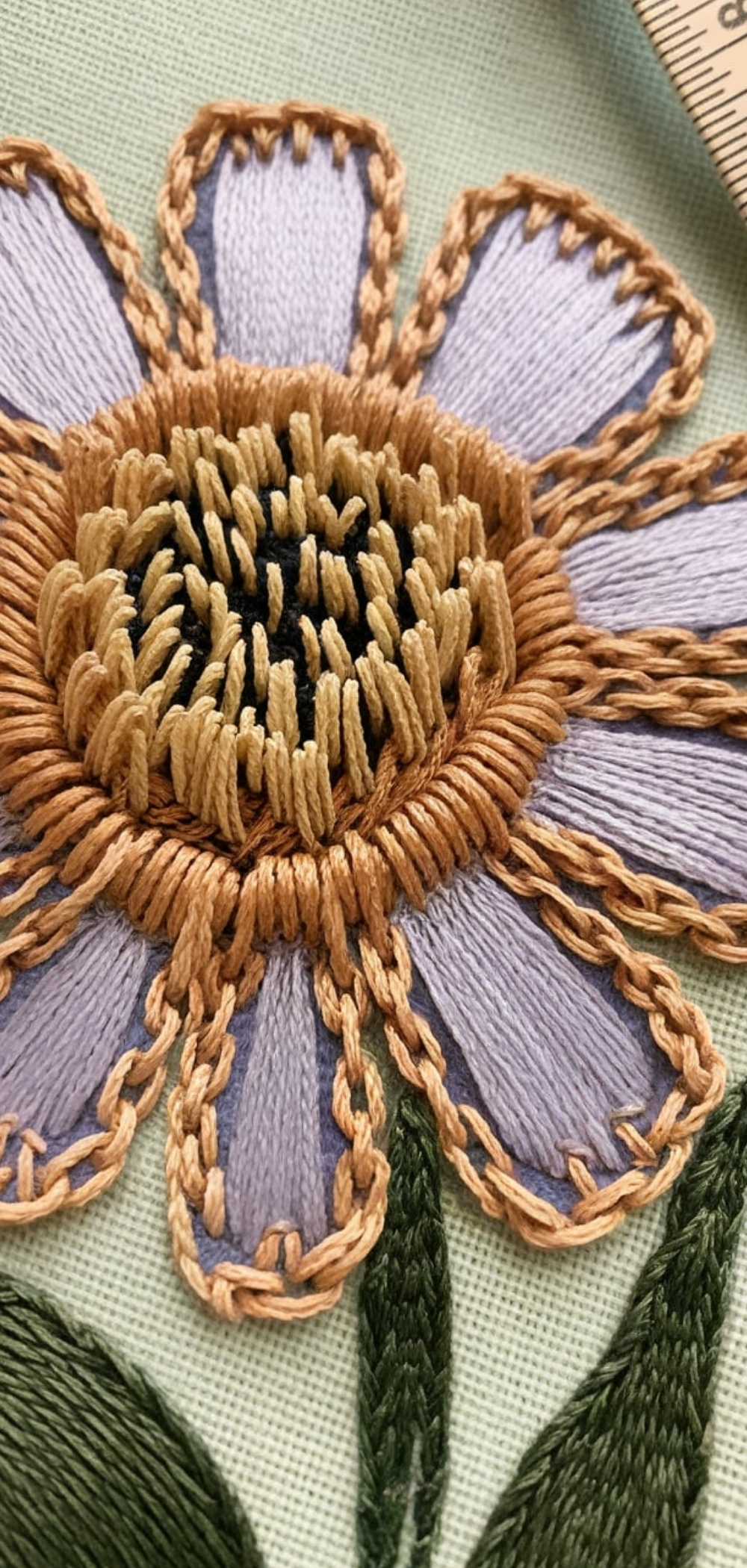
The detached chain stitch is similar to the lazy daisy but with the added advantage of detaching the chain from the anchor point. This stitch creates lovely, free-floating petals and adds variety to your flower designs.
Tips:
- Experiment with different loop sizes to create dynamic petals.
- Use a thicker thread to make the petals stand out more.
15. Thread Painting: For Realistic Flower Details – Embroidery and Stitching
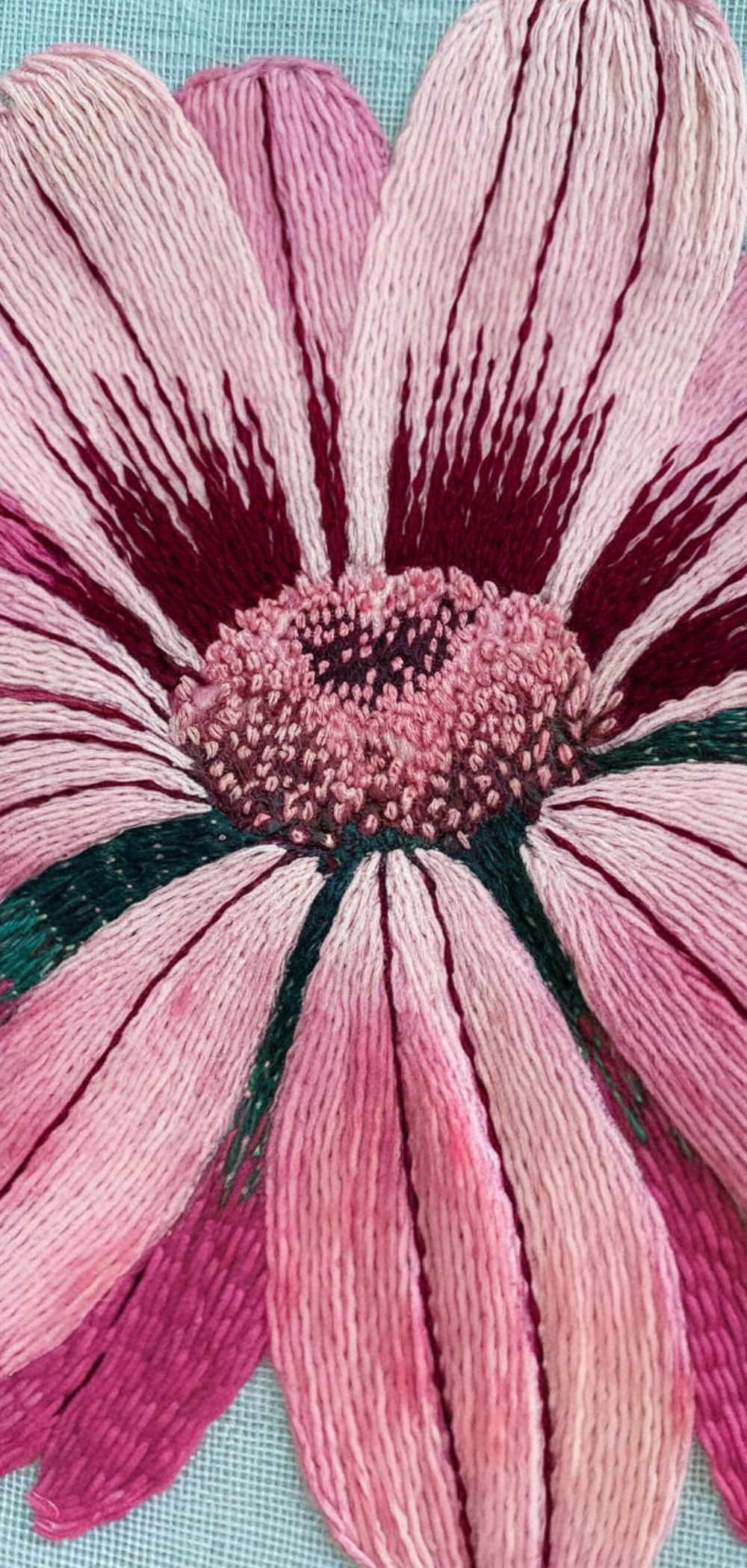
Thread painting allows you to create detailed, lifelike flower designs by layering threads in different directions and colors. This technique is great for adding realism to petals, leaves, and flower centers.
Tips:
- Layer your threads carefully to create depth and shading.
- Use a combination of long and short stitches to replicate the natural flow of the flower.
16. Sculptural Stitches: Adding Dimension to Flowers – Embroidery and Stitching
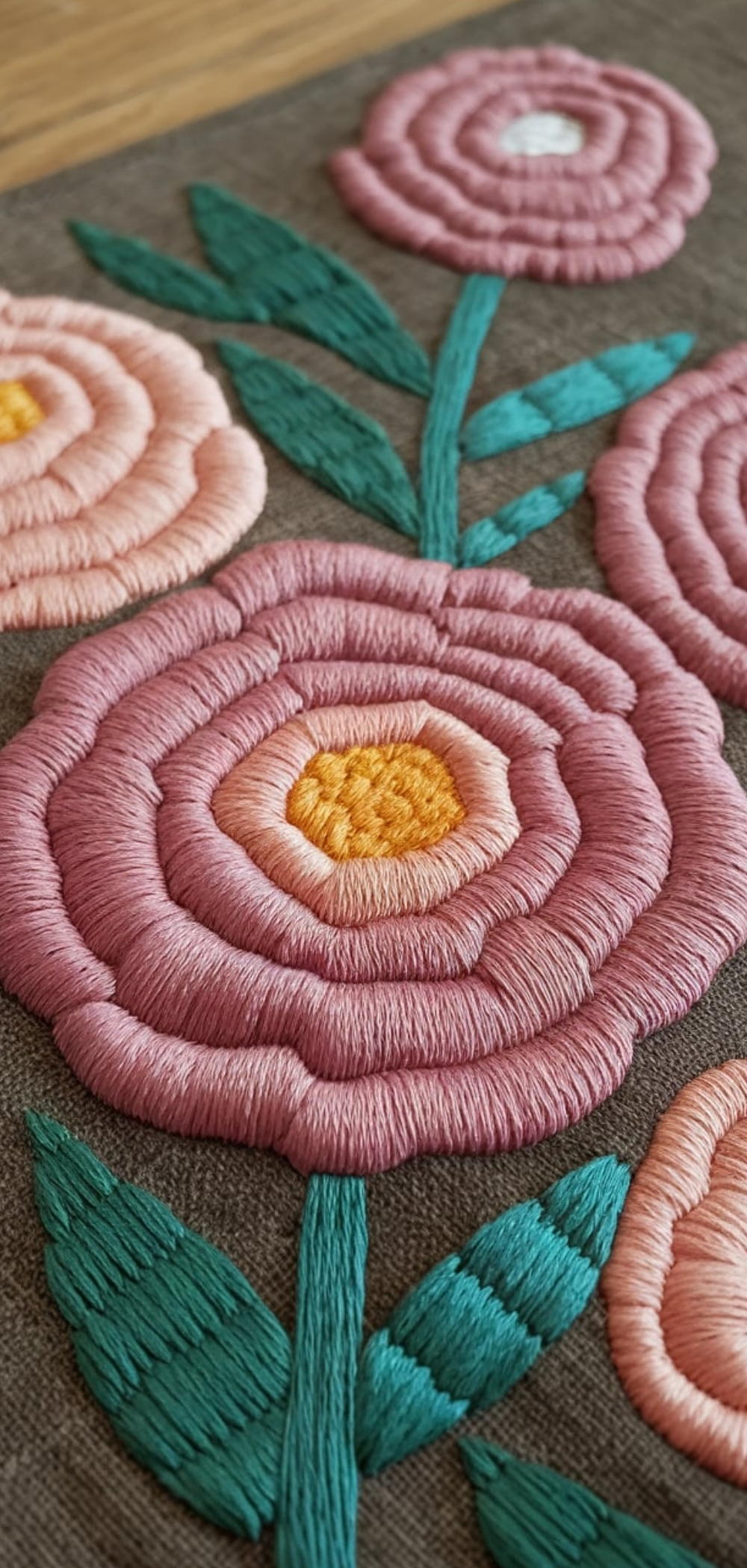
Sculptural stitches are ideal for creating 3D flowers that pop off the fabric. These stitches use techniques such as padding and layering to build up the fabric and create a raised effect.
Tips:
- Start with a base layer of stitches to add dimension.
- Use a thicker thread for more pronounced sculptural effects.
17. Herringbone Stitch: For Elegant Petal Borders – Embroidery and Stitching
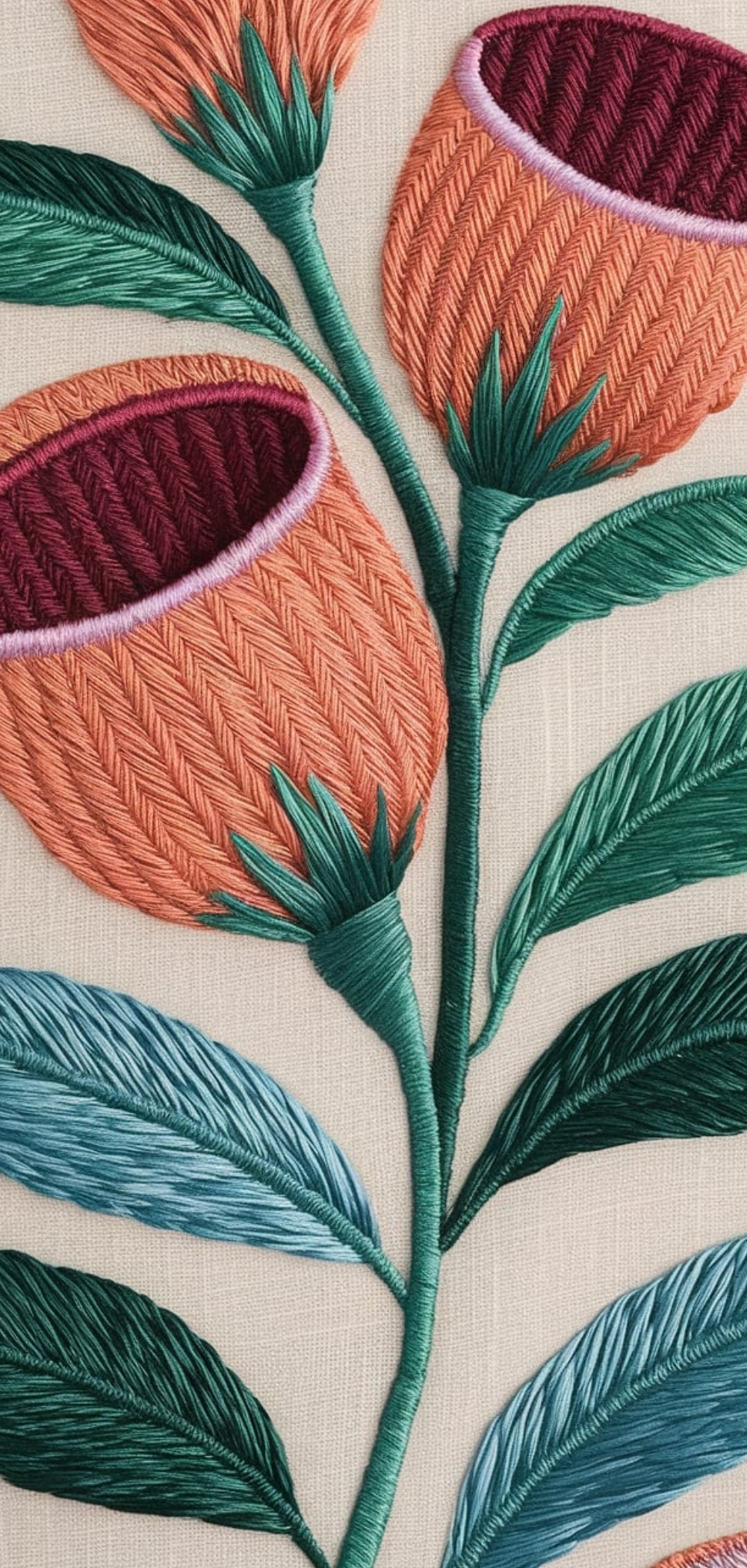
The herringbone stitch is a decorative stitch that can be used to outline or fill flower petals. It adds a woven, elegant texture, perfect for floral accents.
Tips:
- Adjust the angle of the stitch to create different effects.
- Combine this stitch with other filling stitches to add variety.
18. Knotted Stem Stitch: For Natural, Curved Stems
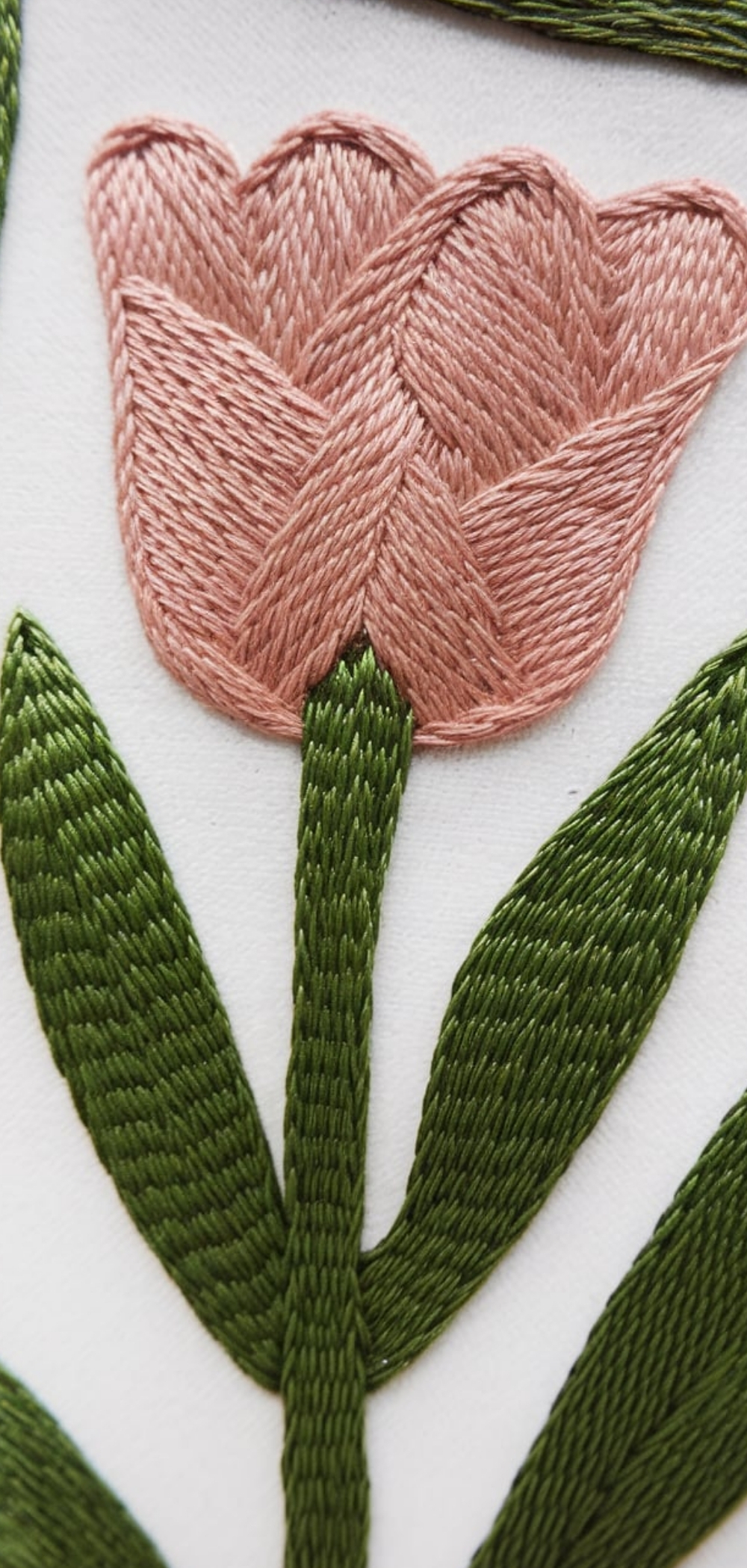
The knotted stem stitch combines the stem stitch with small knots, adding texture to the flower’s stems and vines. It is perfect for creating realistic, natural-looking plant elements.
Tips:
- Make small, tight knots for a refined look.
- Keep the stitch tension even for a consistent result.
19. Flat Satin Stitch: For Bold Petal Fill – Embroidery and Stitching
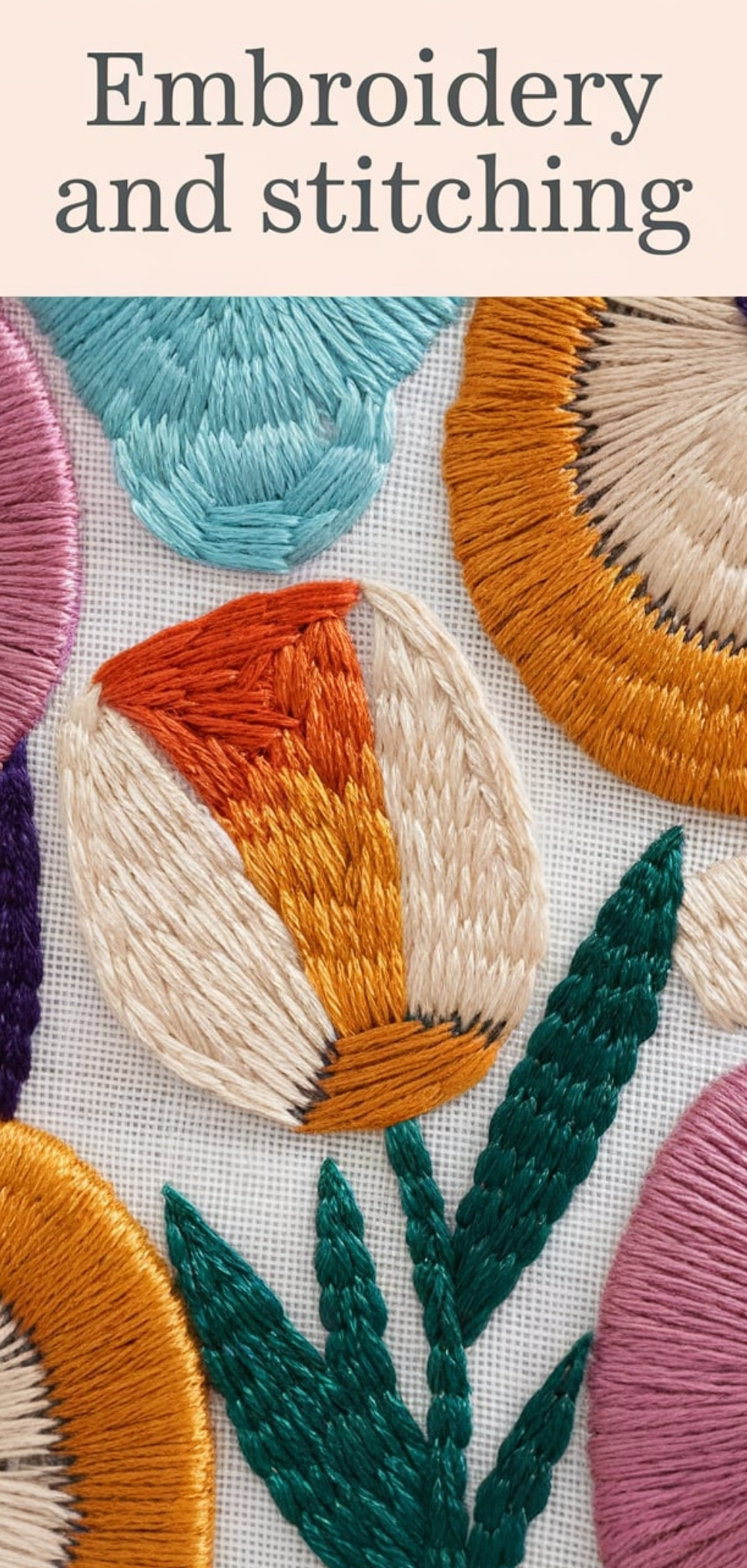
The flat satin stitch is a thicker version of the satin stitch. It is used to fill larger areas, such as flower petals. It provides a smooth, flat finish for bold, colorful floral designs.
Tips:
- Work in rows, following the natural flow of the petals.
- Maintain even tension to avoid puckering.
Frequently Asked Questions (FAQs)
1. What fabric is best for embroidery?
Cotton and linen are ideal due to their tight weave and durability.
2. How do I prevent embroidery thread from tangling?
Use short lengths of floss and condition them with beeswax if necessary.
3. Can I mix different stitches in one design?
Absolutely! Combining stitches adds texture and depth to your embroidery.
4. What’s the best needle size for embroidery?
Use sizes 7-9 for general embroidery and sizes 3-5 for thicker threads.
5. How do I transfer embroidery patterns onto fabric?
Use transfer paper, water-soluble pens, or light tracing methods.
Conclusion
These 19 embroidery stitches will help you create breathtaking floral designs. With practice and creativity, you can elevate your embroidery to a professional level. Happy stitching!





